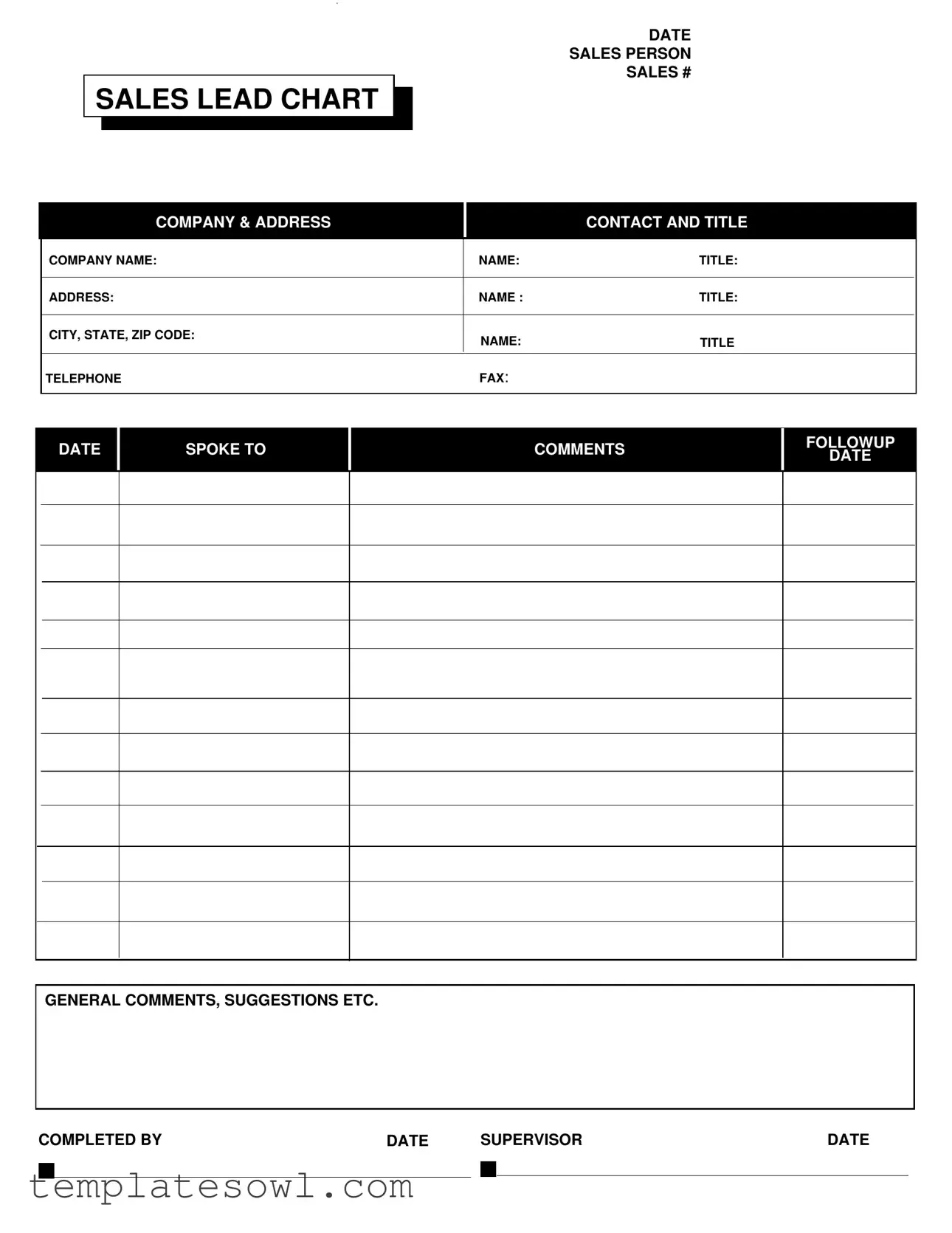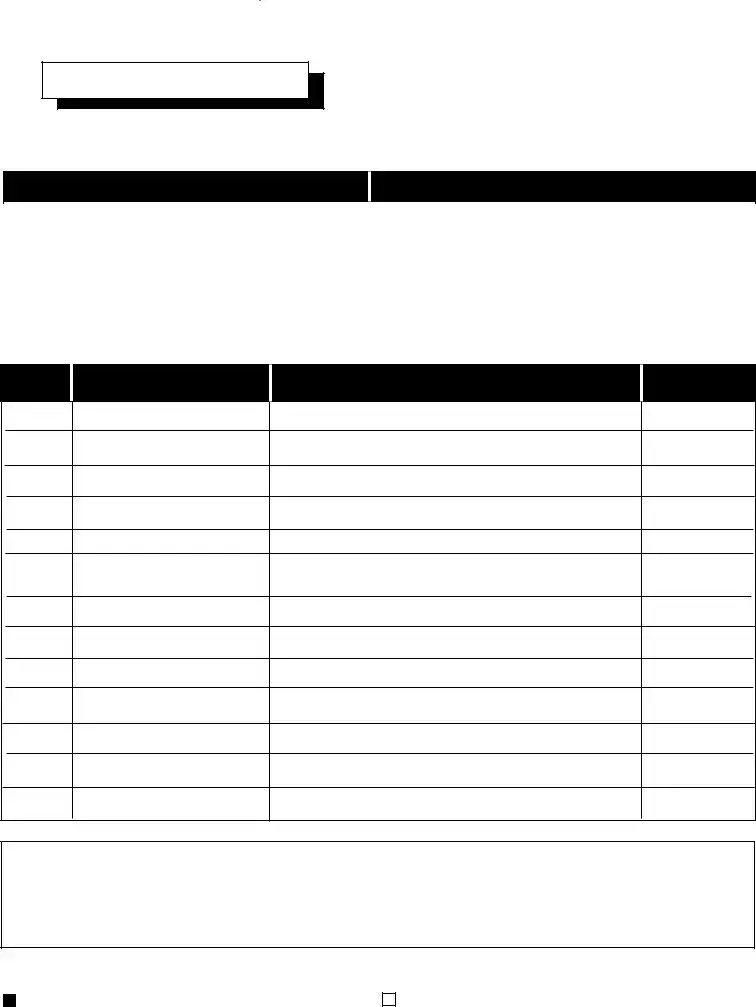What information is required in the Sales form?
The Sales form requests essential details that help in categorizing and following up with leads. Key fields include the date, the name of the salesperson, and a unique sales number. Additionally, the form requires the company name along with its address, city, state, and ZIP code. It is also important to include contact information for a specific individual, including their name, title, telephone number, and fax number. Furthermore, sections for comments or suggestions as well as follow-up dates provide valuable context for each entry.
Who should fill out the Sales form?
The Sales form should be completed by sales personnel who interact with potential clients or leads. These individuals are typically responsible for gathering the necessary information during their conversations and engagements. The salesperson’s direct involvement ensures that the information is accurate and reflects the latest communications, enhancing the efficiency of future outreach efforts.
How does the follow-up date work in the Sales form?
The follow-up date is a crucial component of the Sales form, serving as a reminder for when the salesperson should reconnect with the potential client. After the initial conversation is documented, the salesperson should determine an appropriate timeframe for follow-up based on the interaction. This date is then entered on the form, facilitating timely communication that can lead to conversion of the lead into a customer.
What should I do if a contact's information changes?
If there are changes to a contact’s information after the Sales form has been submitted, it is important to update the form accordingly. The salesperson can either revise the existing form if it is still in use or create a new entry that reflects the updated information. Keeping contact details current ensures that future communications are directed to the correct individuals, preventing potential misunderstandings or missed opportunities.
Can additional comments be added, and how are they used?
Yes, additional comments can and should be included in the designated section of the Sales form. This area allows for the salesperson to provide insights about the interaction, share any observations, or note specific needs expressed by the lead. These comments can be valuable for other team members reviewing the form later, as they provide context that can influence future sales strategies or follow-ups.
What happens after the Sales form is completed?
Once the Sales form is completed, it typically undergoes a review process. The supervisor may examine the entries to ensure accuracy and completeness before it is filed away for record-keeping and future reference. This process is essential for maintaining organized sales records, tracking leads, and evaluating overall sales performance. Additionally, the information collected may be entered into a customer relationship management (CRM) system for easier access and analysis.

